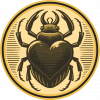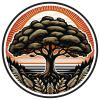We're excited to introduce our project that will enable conservationists to easily train models (no code!) that they can use to identify species in their camera trap images.
As we all know, camera traps are widely used to capture images and videos of wildlife without human interference, however they cannot automatically label the species they observe. Despite the success of image classification machine learning methods, there remains a gap between the technical feasibility of such models and the practical ability for conservationists to run them.
Moreover, existing models cannot capture the entire range of environments in which camera traps are used. Applications span the gamut, from ground mammals to arboreal species to insects and even weather patterns. We believe custom models are inevitable if machine learning is to effectively support the diversity in conservation workflows.
The goal of this project is to provide conservationists with an easy-to-run way to train custom species classification models and use these to process their data without writing any code. We believe this will save countless hours of human review time currently used to process the data and getting conservationists to the ecological outputs they care about faster.
DrivenData has built one of the leading no-code tools for species detection from camera trap videos, Zamba Cloud. Users simply upload their videos to be automatically processed by a machine learning model in the cloud and receive a spreadsheet identifying the species most likely to be present in each video.
This project aims to extend Zamba Cloud to support camera trap images. By the end of the project, users will be able to:
- 1) upload a limited set of labeled images and train a custom model for their species and habitats
- 2) use one of their trained models to identify the species in unlabeled images
We're excited to engage with the WILDLABS community as part of this project! Keep an eye out for a survey that will help us learn more about priority species and geographies where better models are needed. We'll also be looking for beta testers for the new functionality.
6 April 2024 2:52pm
Would this work with timelapse images with lots of animals? And also more so to count the # of animals in the picture rather than speceis ID?
For reference, my research gets timelapse images of seals at two HO sites. but there can be anywhere from 0 to 70+ seals in the pic.

Liz Ferguson
Ocean Science Analytics
7 April 2024 6:04pm
This is so cool @emilydorne , congrats!! Look forward to seeing your project evolve!
Liz

Lars Holst Hansen
Aarhus University
7 April 2024 9:03pm
Congratulations with the grant! I am looking much forward to seeing the result of your project!
21 April 2024 5:19pm
Hi, this is pretty interesting to me. I plan to fly a drone over wild areas and look for invasive species incursions. So feral hogs are especially bad, but in the Everglades there is a big invasion of huge snakes. In various areas there are big herds of wild horses that will eat themselves out of habitat also, just to name a few examples. Actually the data would probably be useful in looking for invasive weeds, that is not my focus but the government of Canada is thinking about it.
Does your research focus on photos, or can you analyze LIDAR? I don't really know what emitters are available to fly over an area, or which beam type would be best for each animal type. I know that some drones carry a LIDAR besides a camera for example. Maybe a thermal camera would be best to fly at night.













Michelle Guins